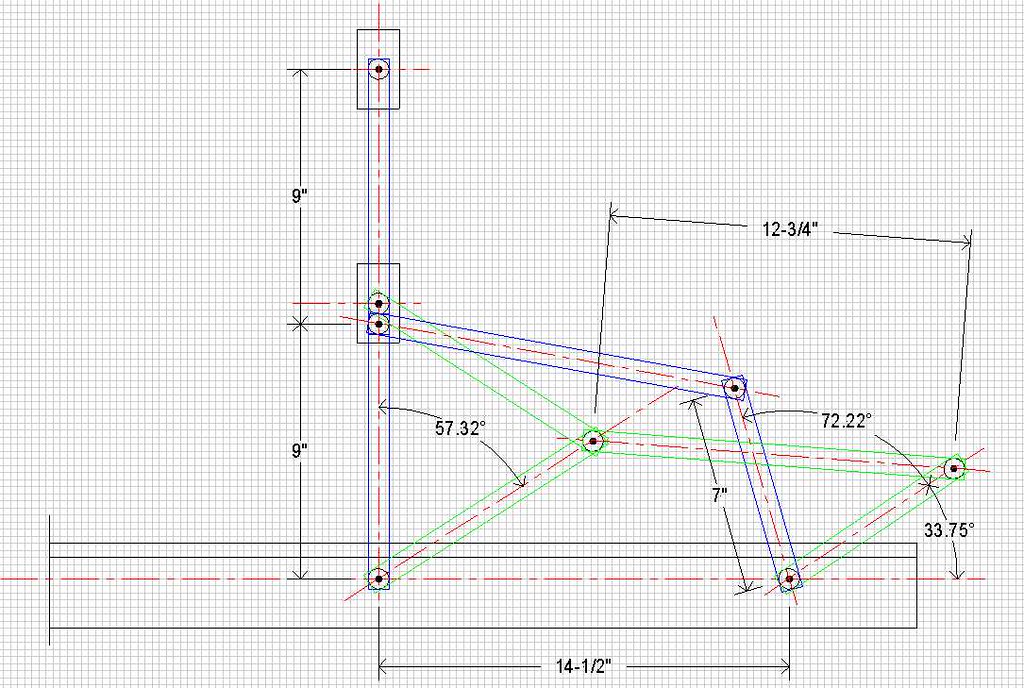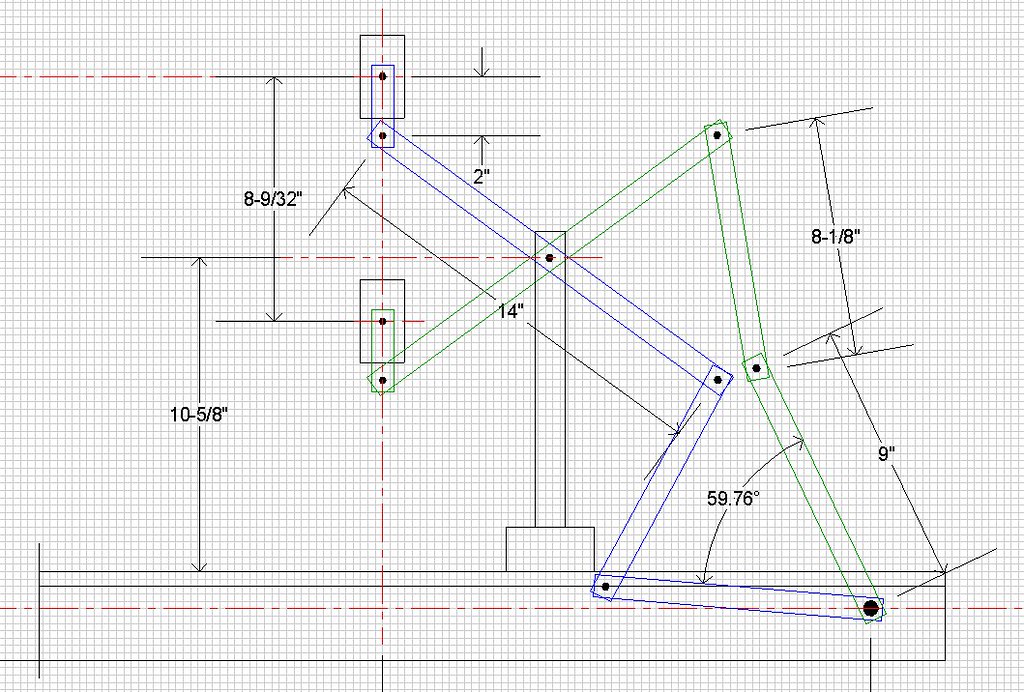Well, I've been working on the design and maybe I have something a little more workable. I'll post a pic here with measurements for anyone who cares. I have assumed the lever would start out perpendicular to the base and swing down through an arc of about 75 degrees toward the center. At any rate that is what I was aiming for with the first lever on the back. This design will put a significant side load on whatever mechanism is used to suspend the platen. It could also put a significant torque load on it as well depending upon how far behind the platen the attach point for the mechanism is located. I was planning on using the twin PVC post design from the Cratylus build. I would substitute Schedule 80 PVC for the twin columns as the wall thickness is greater and it is stiffer. This should be able to handle any side or torque loads applied and has the advantage of being gray (at least generally) and unlikely to contribute to glare in the images taken.
With this design the angular travel of the actuation lever can be varied by changing the length of the 7" lever shown in the sketch. If the length of this lever is changed to 9" then a parallelogram is set up and the angular travel will be the same as the center linkage, in this case about 57 degrees. Gradually shortening the lever towards 7" will result in ever greater travel of the handle.
With the center linkage being straight, that is the two 9" pieces in a straight line, an over-center stop could be easily incorporated so that the platen could be locked at the top for changing or positioning books on the cradle.
The total lift of the cradle with this design is 8 9/32". I was shooting for 8 1/4 and I figure that's close enough. We're not going to the moon here. lol If more lift is desired, the center links simply need to be lengthened the appropriate amount.
Any suggestions or criticism is welcome.


